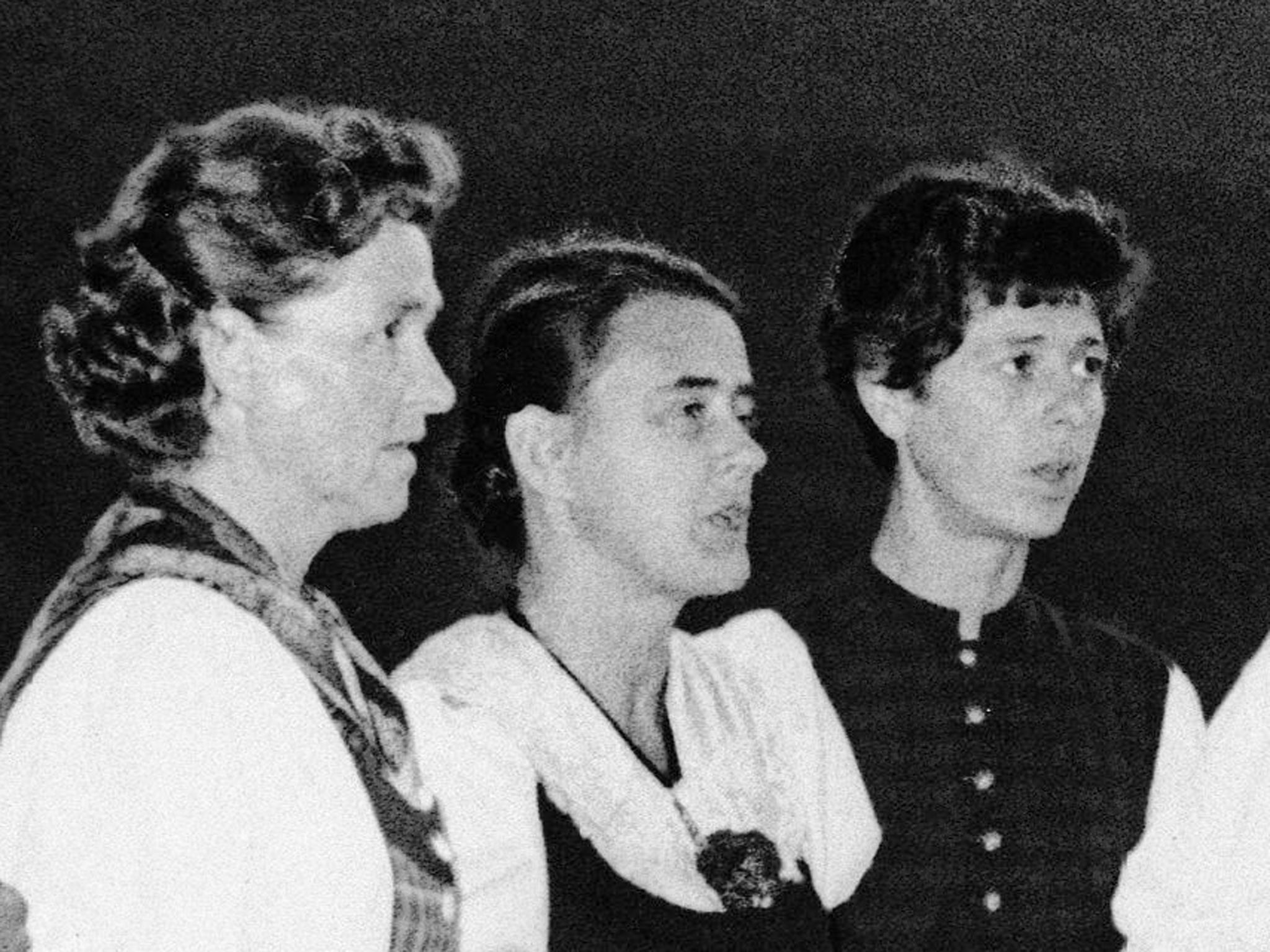Maria Agatha Franziska Gobertina von Trapp
Singer and missionary who was immortalised as Louisa in the stage show and film ‘The Sound of Music’

Maria Franziska von Trapp, who has died at the age of 99, was the second-oldest daughter and last surviving member of the musical family whose escape from Nazi-occupied Austria was the basis for The Sound of Music.
In the stage musical and the film that followed she was portrayed as the character Louisa, played by Heather Menzies. The film, starring Julie Andrews and Christopher Plummer, and with unforgettable songs by Rodgers and Hammerstein, won five Oscars and remains one of the most successful films ever made.
The fictional 13-year-old Louisa was the third child of the family, something of a daydreamer with a penchant for practical jokes like filling governesses’ beds with spiders and pretending to be her younger sister, Birgitta (a ruse which fails to catch out July Andrews’ Maria in the show and film). The Sound of Music was based loosely on the 1949 book The Story of the Trapp Family Singers written by von Trapp’s second wife, also Maria von Trapp, who died in 1987. It tells the story of how, as a schoolteacher and postulant, she was engaged to teach the seven children after their mother died from scarlet fever, eventually marrying the childrens’ father and forming a family musical troupe.
Like the fictional Louisa, in real life Maria Franziska von Trapp was the third child and second-oldest daughter of the Austrian naval captain Georg and his first wife, Agathe Whitehead von Trapp. She was born in the Austrian Alps after her family had fled the fighting in the First World War in present-day Croatia. Growing up, she recalled, she was surrounded by music. “Father played the violin, accordion and mandolin. Mother played piano and violin,” she wrote. “I have fond memories of our grandmother playing the piano for us after meals.”
In the show and film, Baron von Trapp was depicted as a strict patriarch and martinet. In fact, said Maria, this was wildly inaccurate. “When I first saw The Sound of Music, I was disappointed by the way Father was represented,” she wrote. “This came to me one day during a stage show in California, after which the stage father apologised that he was obliged to misrepresent my father.”
Maria’s stepmother was also musical, and belonged to a musical group called Neuland, which played classical music and Austrian folk music. “Through this group, we were exposed to madrigals and masses by Mozart and Hassler, which we easily mastered,” Maria recalled. “We also discovered we had all the voices necessary for four-part music.”
The family began performing publicly thanks to financial losses suffered during the Depression. Maria’s stepmother had transferred her savings from London to an Austrian bank run by a friend. The bank failed and the family faced financial ruin. They sent away most of their servants, moved into the top floor of their home and rented the empty rooms to students of the Catholic University.
The Archbishop of Salzburg sent Father Franz Wasner to stay with them as their chaplain and they began singing under his direction. The soprano Lotte Lehmann heard the family, and she suggested they give concerts. When the Austrian Chancellor Kurt Schuschnigg heard them on the radio he invited them to perform in Vienna.
In 1938 the family escaped from Nazi-occupied Austria, fearing reprisals resulting from their declining to sing at Hitler’s birthday party and Georg von Trapp’s refusal to accept a commission in the German Navy. Calling themselves the Trapp Family Choir, they performed concert tours throughout Europe and then a three-month tour in America, from which they never returned.
They performed in New York at the Town Hall on 10 December 1938. A critic in the New York Times wrote: “There was something unusually lovable and appealing about the modest, serious singers of this little family aggregation as they formed a close semicircle about their self-effacing director ... the youthful sisters garbed in black and white Austrian folk costumes enlivened with red ribbons. It was only natural to expect work of exceeding refinement from them, and one was not disappointed.”
The family eventually settled in Vermont and continued performing, despite Georg’s death in 1947. In 1950 they opened a ski lodge in Stowe, where Maria played accordion and taught Austrian dance with her stepsister Rosmarie (one of three children born to Georg and his second wife). The family made a series of 78rpm discs for RCA Victor in the 1950s, and there were some later LPs – as well as an appearance on an Elvis Presley Christmas record. In the late 1950s the troupe disbanded and the two Marias, stepmother and stepdaughter, along with two of the other children, became lay missionaries in Papua New Guinea, returning to the US in the late 1960s.
“She was a lovely woman who was one of the few truly good people,” her half-brother, Johannes von Trapp, said of Maria Franziska. “There wasn’t a mean or miserable bone in her body. I think everyone who knew her would agree with that.”
Maria Agatha Franziska Gobertina von Trapp, singer and lay missionary: born Zell am See, Salzburg, Austria-Hungary 28 September 1914; died Stowe, Vermont 18 February 2014.
Join our commenting forum
Join thought-provoking conversations, follow other Independent readers and see their replies
Comments
Bookmark popover
Removed from bookmarks